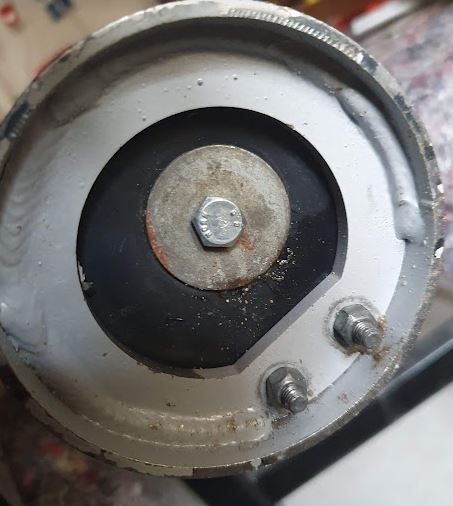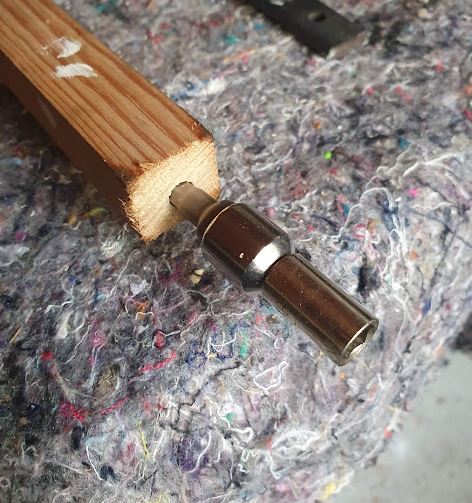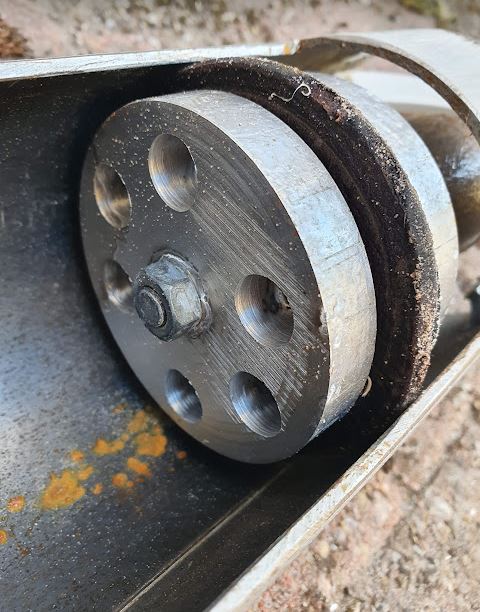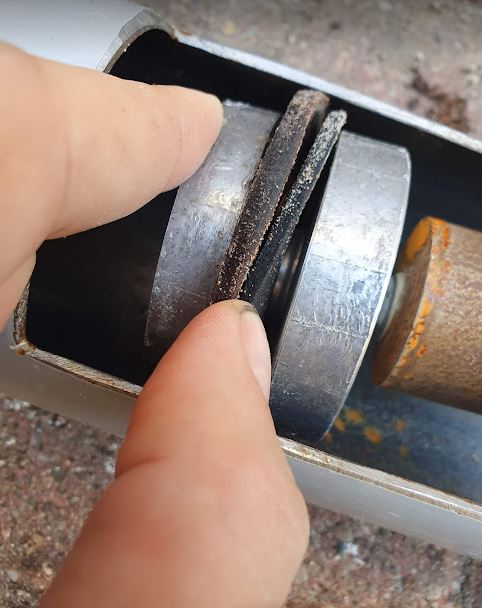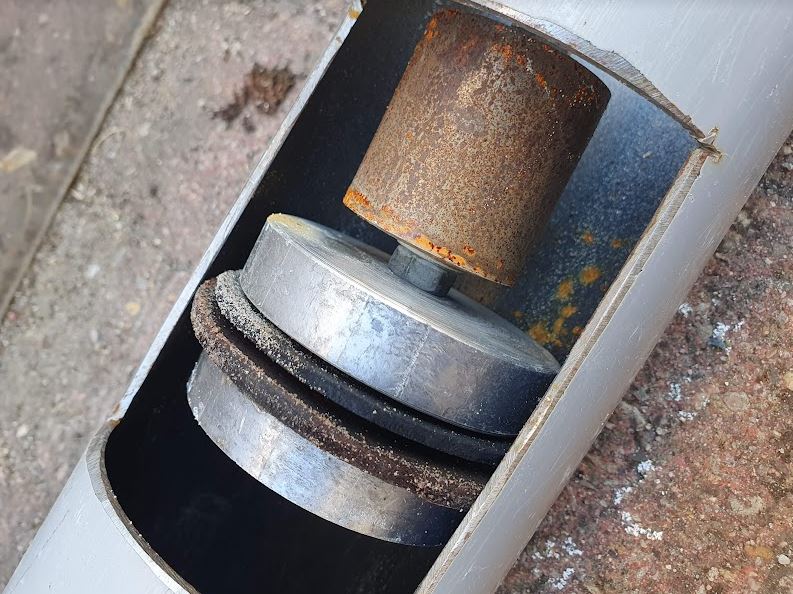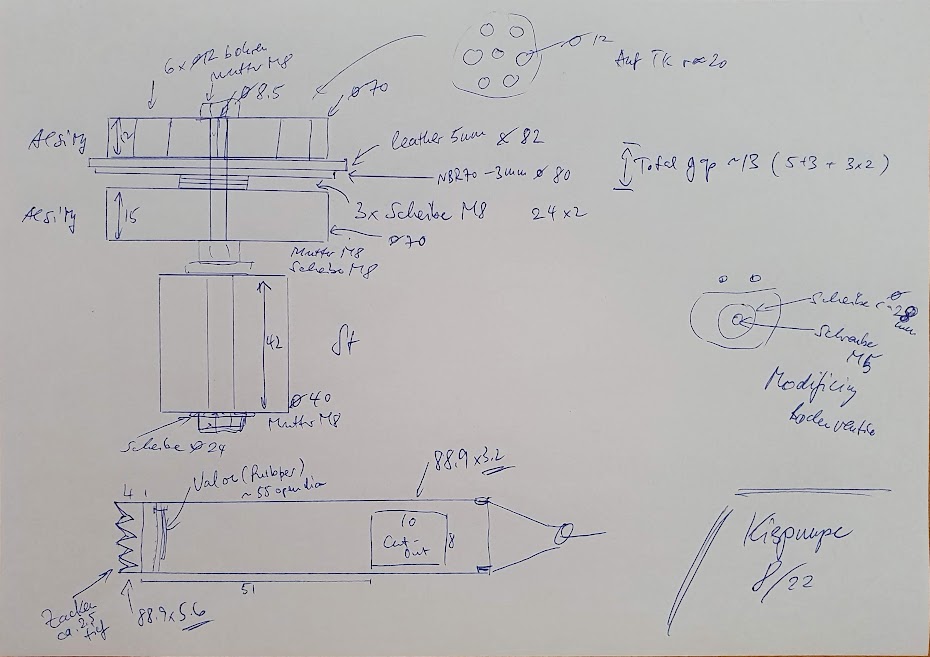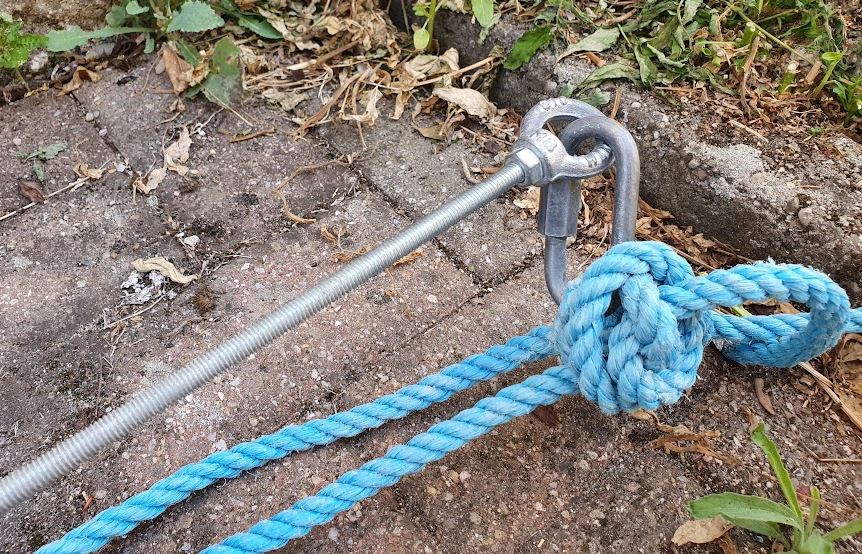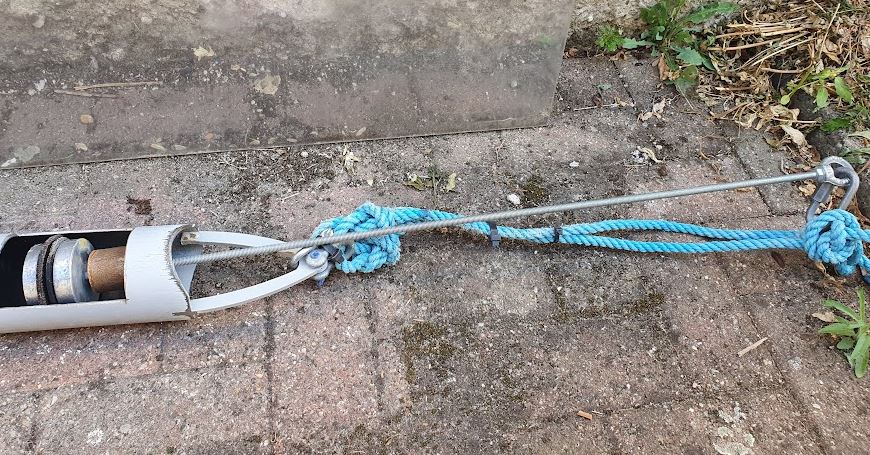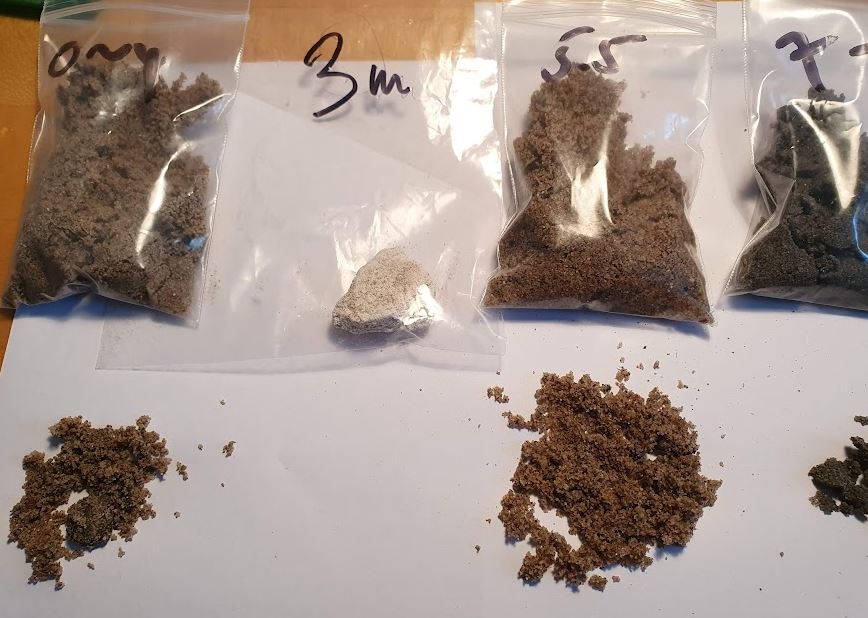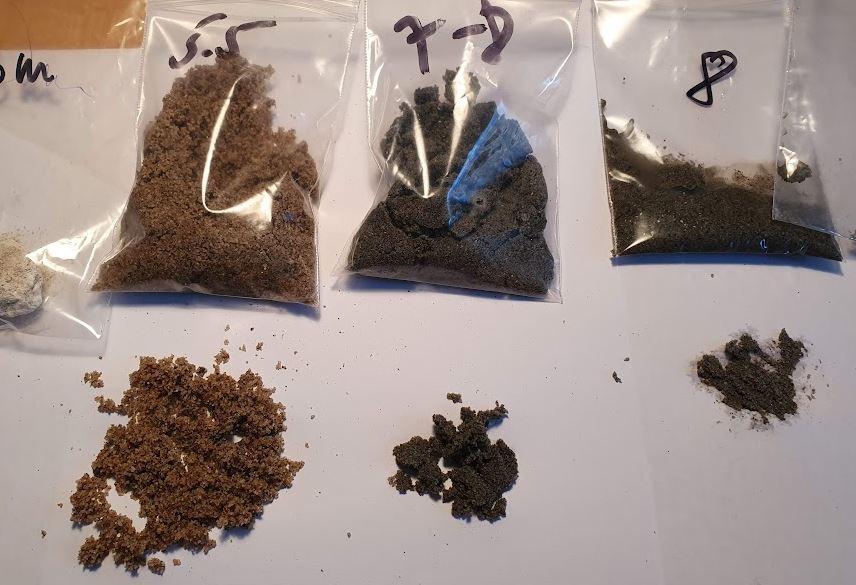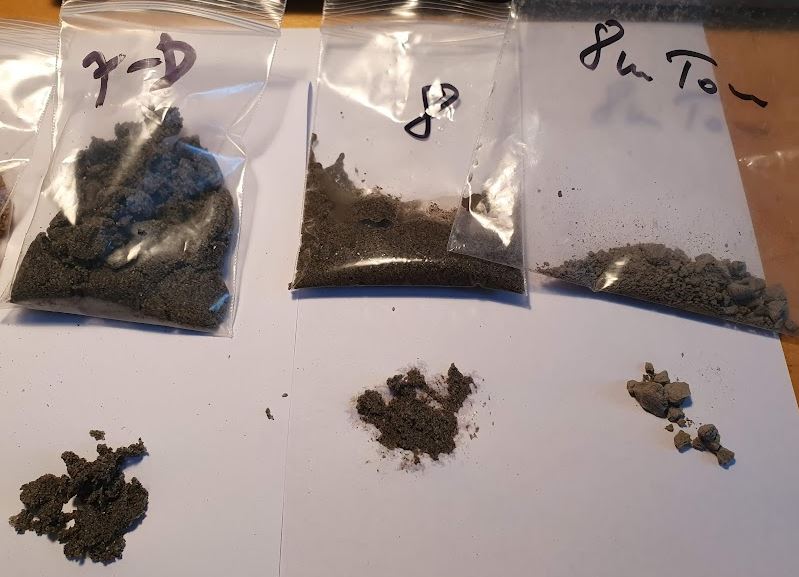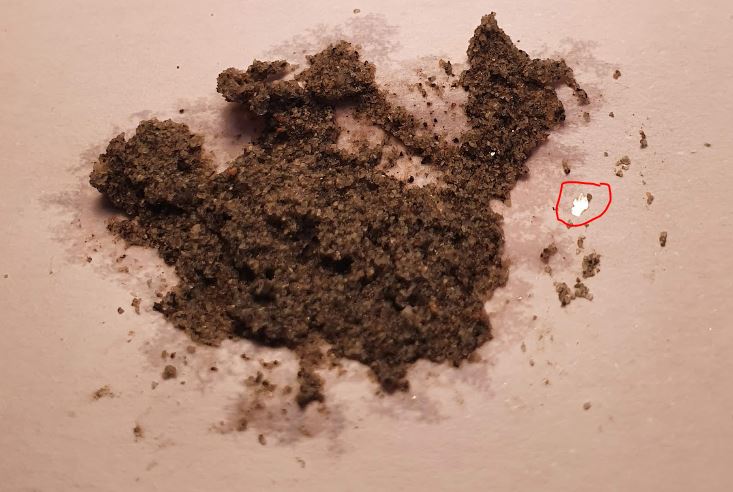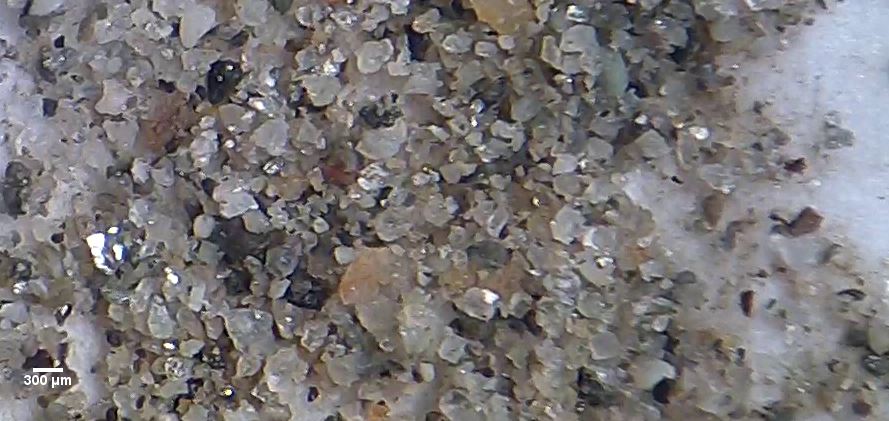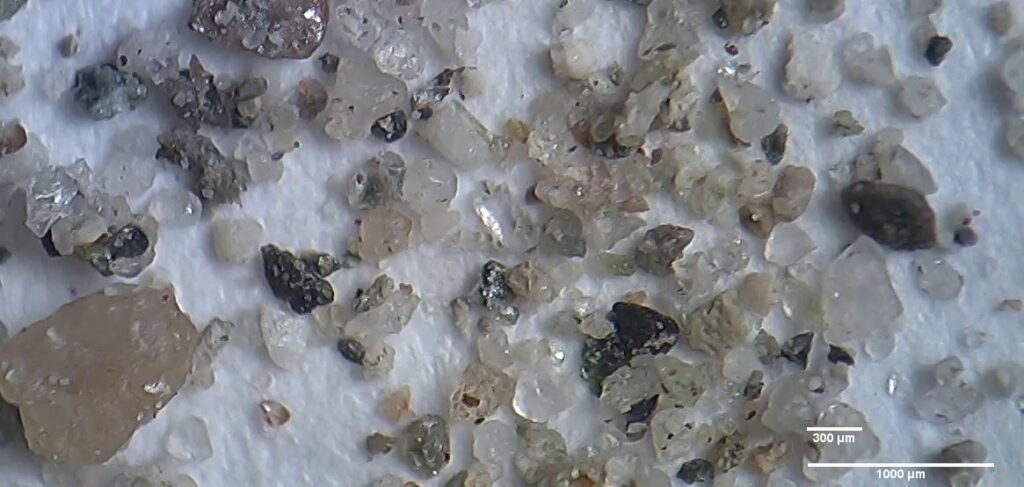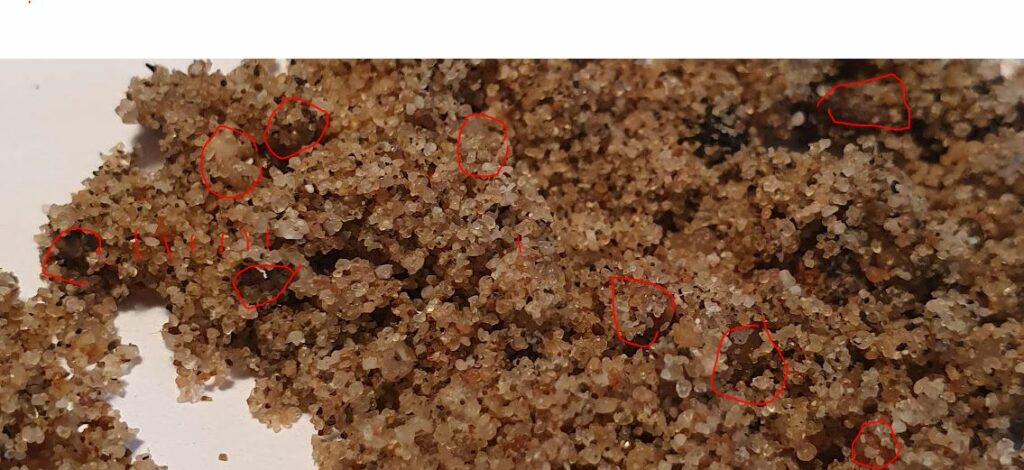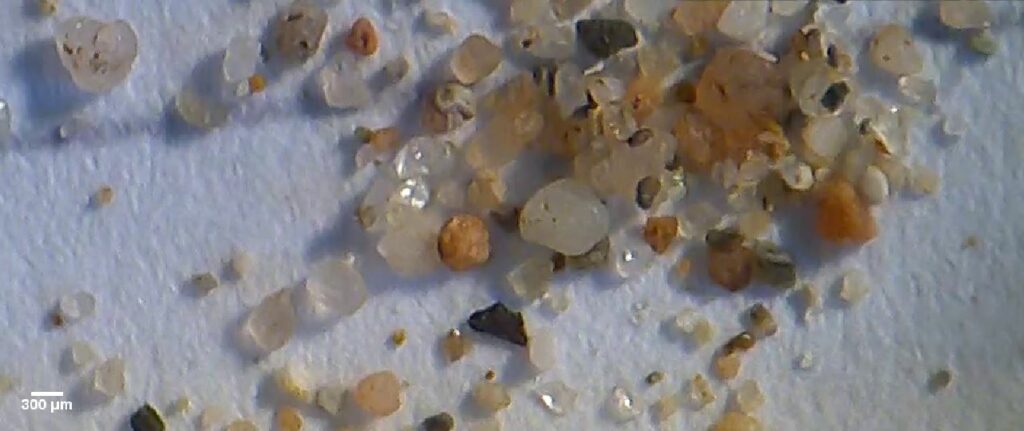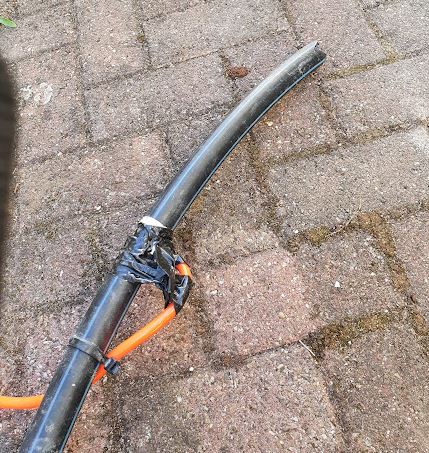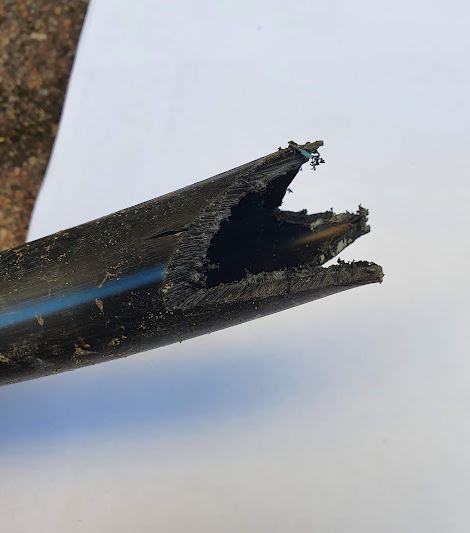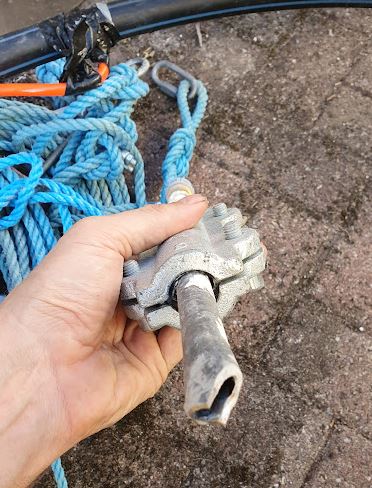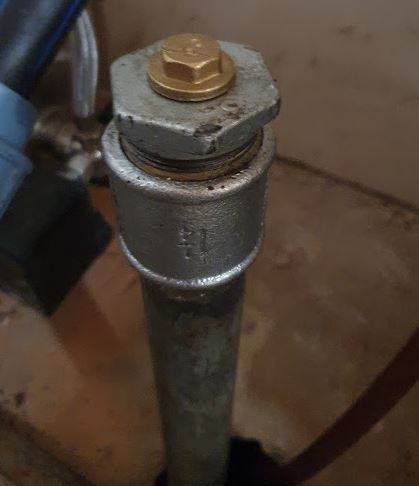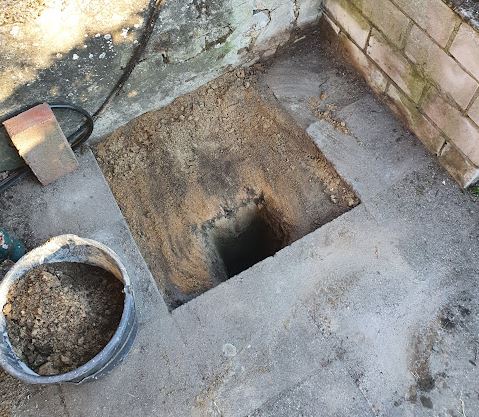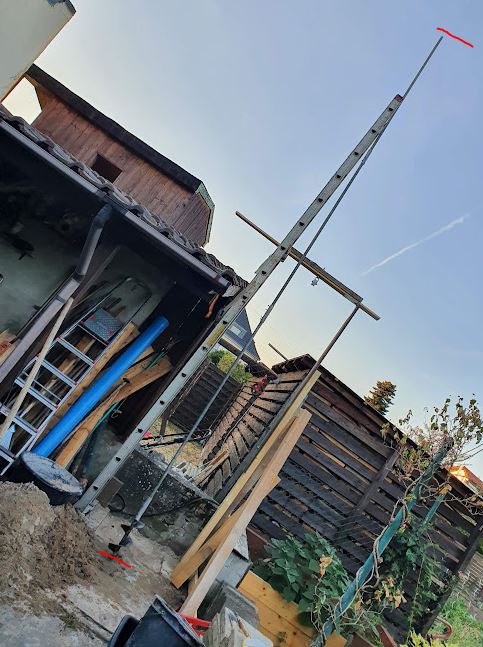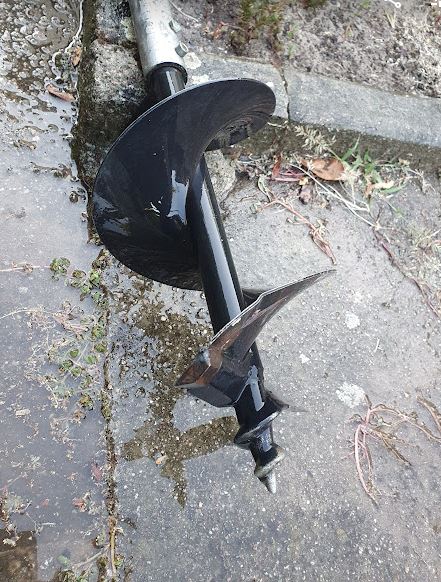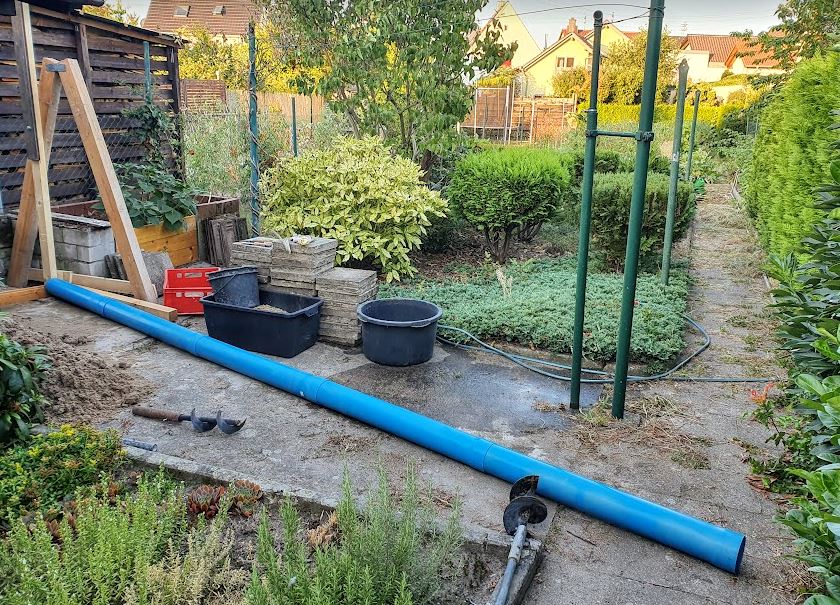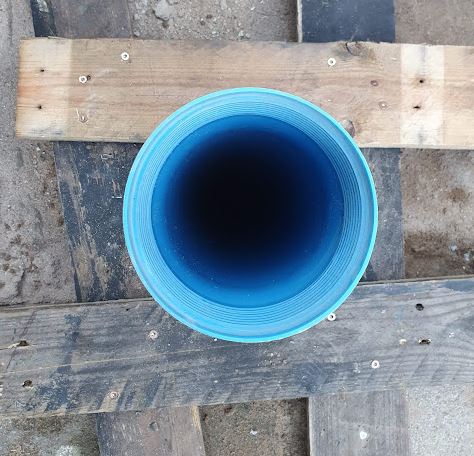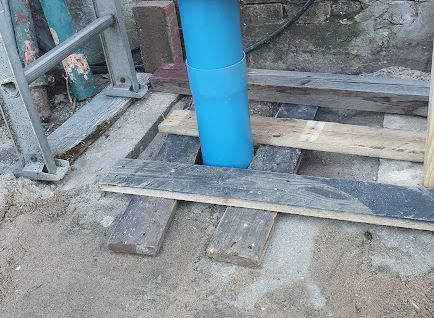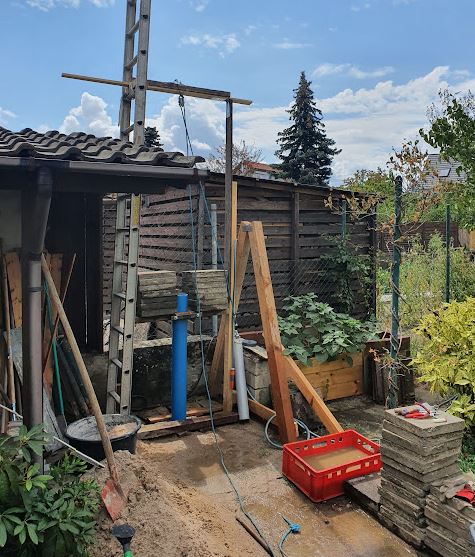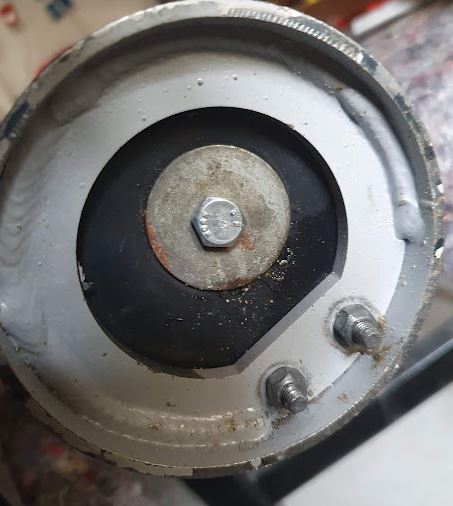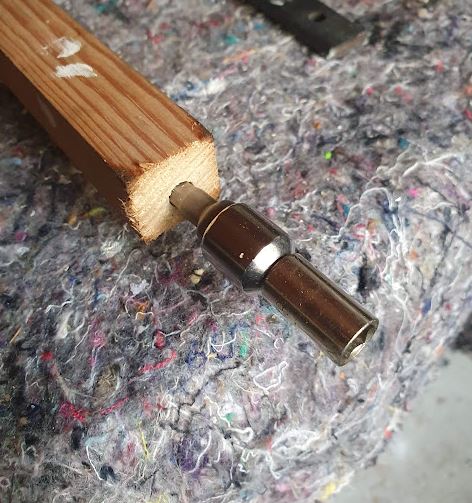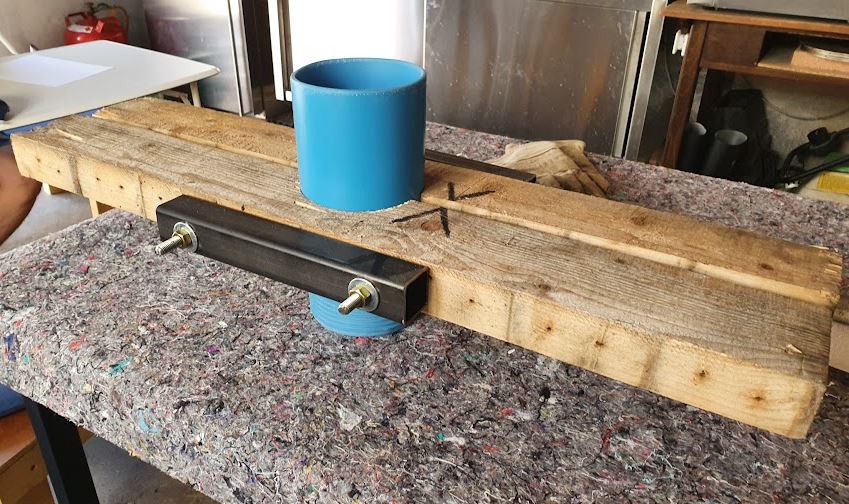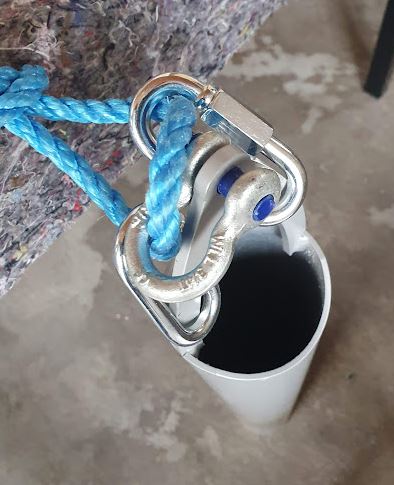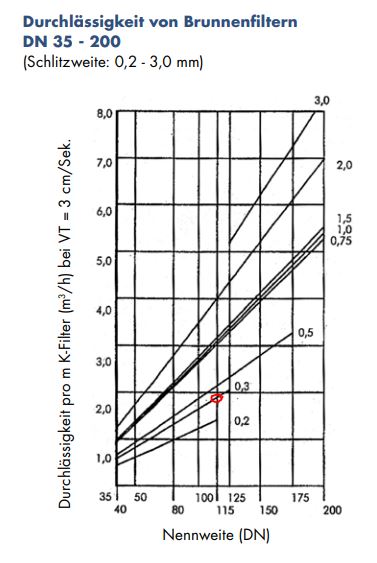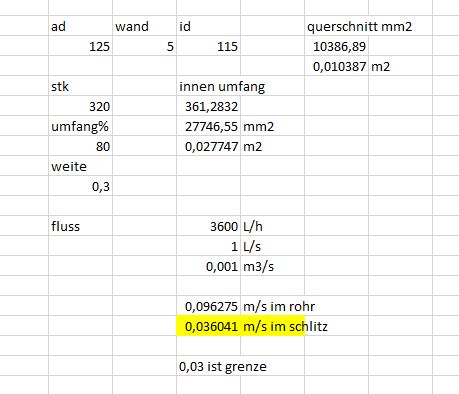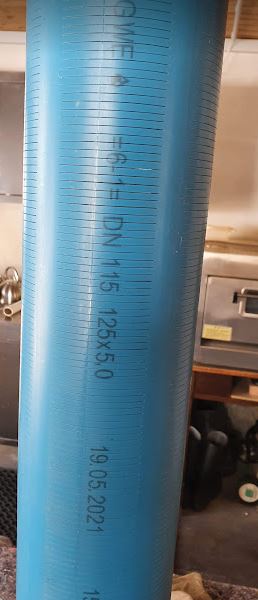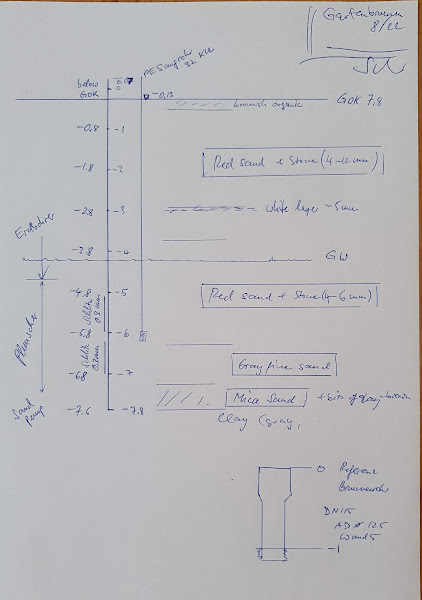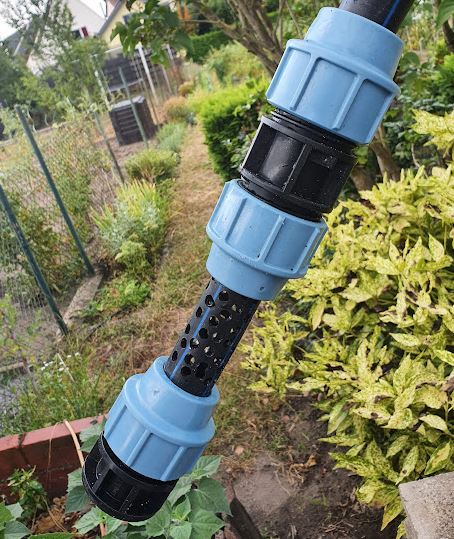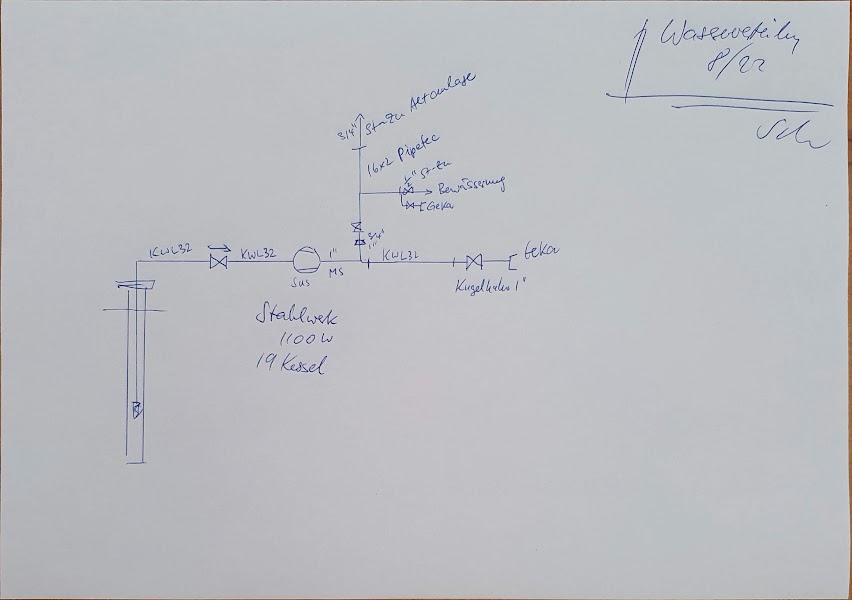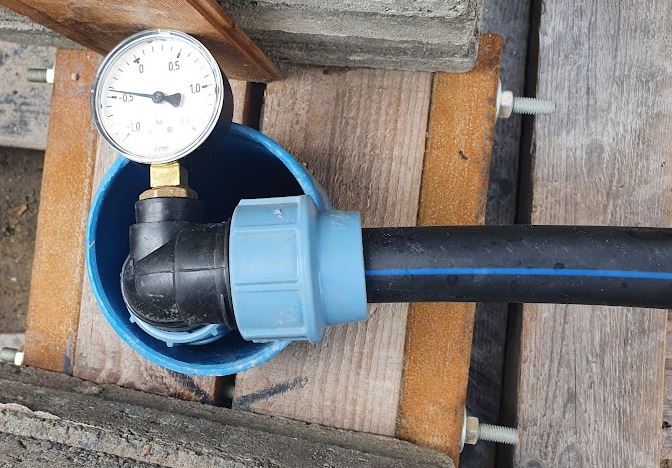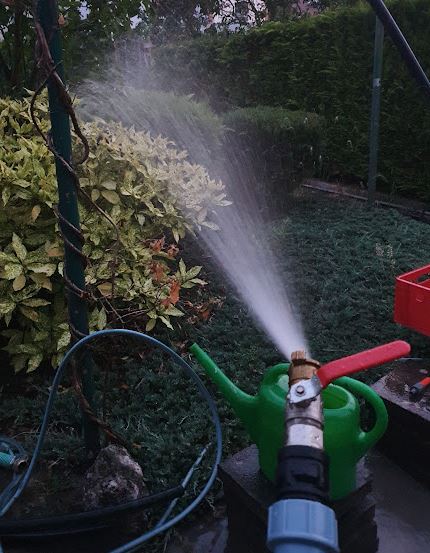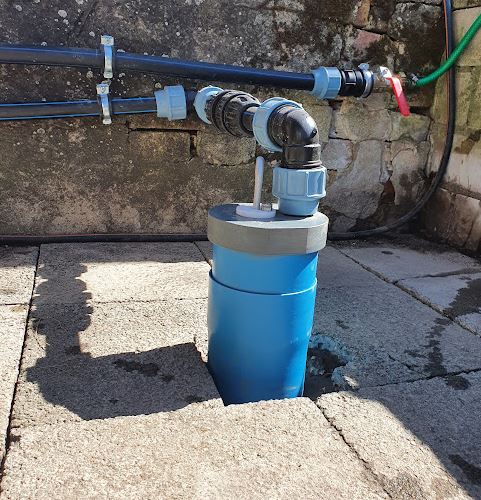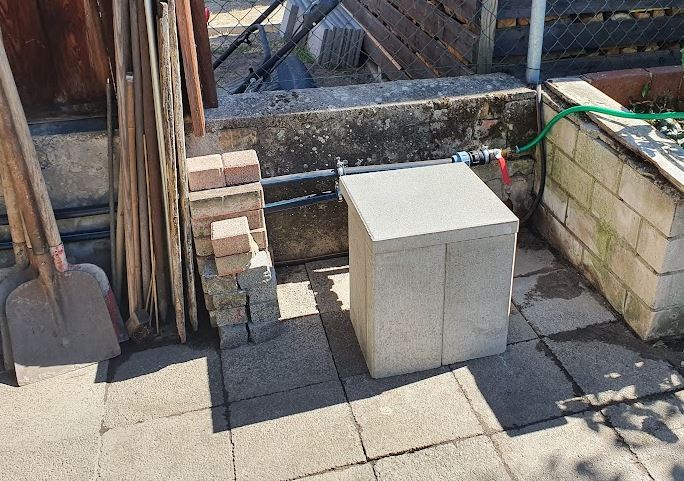The key tool for sinking a well (unless you want to climb in and dig it out) is a device called a plunscher, or a gravel pump. A punscher is a simple metal pipe, with a rubber flap (valve) at the bottom, and it will fill with sand when pulling it up quickly. This has to be done with enough speed to suck in sand, and you can add water to the well to get this done quickly (plunscher only works when submerged – at least mostly – in water). While this works well for sand and small gravel, the more efficient tool is a gravel pump – essentially a plunscher with a piston inside that will actively suck-in the sand from the bottom of the pipe. The piston will lower again under its own weight, and by repeated pulling it gravel pump will fill with sand and gravel quickly.
This is the setup, you can see the blue rope, make sure to use a good and strong rope, because the forces involved are quite substantial and sand will wear down these ropes, so better to exchange them from time to time in case you want to dig multiples wells.
First modification, a washer mounted in the middle of the rubber flap, it ensures better tightness and valve action. Some plunschers have this feature already from the supplier. Better to use some 4 mm fibre-reinforced NBR rubber.
The mounting screws are difficult to reach, so I mad an extension from a piece of wood…
The weld quality of the plunscher wasn’t all that good, but well, this is not a rocket engine, but a tool fabricated to a certain (rather moderate price tag). This price tag is also the reason why you wouldn’t directly by a gravel pump: a good gravel pump will set you back 150 EUR, whereas a plunscher can be obtained for 45~50 EUR. And, surely, it is more fun to do some modification yourself rather than buying all the expensive tools right away.
This is the modified plunscher, you can see the piston, and the cut-out.
The piston needs to have a valve action as to allow the piston to sink at moderate speed, but obtaining good vacuum when pulling the rope. I also tried to use two ropes: one for the piston, one for gravel pump case, but these ropes get entangled and there is no need for such ropes: the weight of the pump will keep it down, if you just pull with the right force and speed.
The piston needs to maintain some clearance from the wall, otherwise, it will get stuck with small stones, etc.
As a seal, I used leather from an old school bag, very firm and thick leather, and a somewhat smaller rubber disc (fairly hard NBR rubber). This worked well with no significant wear. The leather can be made such that there is almost no gap, for example, 1 mm, to ensure strong suction for fine sand. If you have coarse sand, probably you can also work with a larger gap or worn piston seal, you just need to pull the rope more often. I generally recommend to keep the gap small unless you run into some trouble with specific gravel or some particular sand or stone.
At the bottom, for the last meter, I attached a serrated, rather dangerous-looking teeth ring, to cut into the ground and loosen the sand. It worked marvelously. Generally I can recommend to keep the well flooded as much as possible by adding water all the time, then no sand will flow into the pipe if you hit a somewhat “liquid” layer. I probably kept the water level at least 50 cm above the water table.
The rope needs to be mounted such that the piston cannot be pulled out completely, this needs to be adjusted properly. Sure you could also weld a guide ring or similar for the piston, but it worked out very well with the more “wobbly” piston, the vacuum is strong, and the extraction of sand was more limited by the nature of the lowest sand and clay layer, rather than by the vacuum level.
It seems it wouldn’t hurt for the gravel pump to be a bit heavier, for example, by using a longer and heavy-walled tube, but this will also require more force to lift it up. Also the piston could be a bit heaver to sink more quickly, but well, you will figure out how to operate with the tool after a little while, and a shorter gravel pump is certainly more easily handled. Just make sure to wear proper work boots, because your toe may crack if you drop the gravel pump on it. An the serrated front will bite into your foot as nicely as it bites into hard sand.
As for the diameter, it seem that the 89 mm outer diameter is well suited for a DN115 well pipe. I could imagine that with a larger gravel pump, it may be difficult to withdraw, and will be overly heavy. So unless you gain other experience, any pipe around 90 mm outer diameter will work. I would suggest to use 88.9×5.6 which is a bit heavier, rather than the 88.9×3.6 used for the punscher. But probably all will work if you handle it right.


